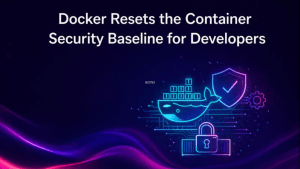Introduction
Virtualization is no longer simply about consolidating servers. Today, it plays a central role in enabling cloud-native modernization while supporting the legacy systems that remain critical to enterprise IT. Red Hat’s August 2025 Thought Leadership Webinar on OpenShift Virtualization underscored this point, highlighting new innovations, customer adoption stories, and a roadmap that stretches from the edge of the data center to public cloud. Red Hat aims to change how virtualization is evolving, not as a competing model to containers, but as a complementary capability that enables modernization at scale.
This discussion arrives against a backdrop of rapid industry change. theCUBE Research has found that more than 85% of enterprises are planning near-term investments in observability and AI-driven operations, even as cultural resistance and tool fragmentation remain common challenges. The emphasis on unifying infrastructure management across VMs and containers aligns directly with these findings, giving developers a way to reduce complexity and accelerate innovation.
Adoption Momentum
Red Hat reported that OpenShift Virtualization has generated $300 million in bookings over the past year, reflecting growing enterprise adoption. Supporting this growth is a 92% increase in virtual machine deployments, 395% cluster expansion, and more than 850,000 VMs assessed by Red Hat Services. These figures demonstrate not only strong customer demand, but also a shift in how enterprises view virtualization. It is no longer seen as an isolated function, but as part of a modern platform strategy that allows applications to move seamlessly between VMs and containers. For developers, the significance is clear: hybrid environments are becoming the standard, and OpenShift provides a consistent interface to build and manage applications across them.
Innovation Themes
One of the major focus areas in the webinar was migration. Red Hat emphasized new pre-check capabilities to detect configuration issues before workloads move, as well as tools for parallelized data transfers and support for Hyper-V environments. These improvements could help reduce the friction that often slows modernization efforts, potentially freeing developers to concentrate on application logic rather than infrastructure hurdles.
Networking and isolation also received significant attention. The introduction of User Defined Network (UDN) and expanded multi-tenancy across VLANs and namespaces aims to offer stronger tenant separation, while upcoming support for BGP and EVPN will make it easier to extend networks across clusters. For developers building applications in multi-tenant or regulated industries, these enhancements may provide greater assurance of compliance and security without additional complexity.
Edge deployment emerged as another priority, with new two-node high availability options and technology previews on Oracle OCI, Google Cloud, and Azure Red Hat OpenShift. General availability support for IBM Z, LinuxOne, and ARM platforms is also planned. The practical effect is greater flexibility: developers could now target workloads for edge, core, or public cloud environments, depending on the use case, without having to redesign applications for each scenario.
Finally, Red Hat showcased its OpenShift Lightspeed initiative, a generative AI-based assistant embedded directly into the OpenShift console. The assistant offers contextual help, particularly for administrators transitioning from VMware, but also provides developers with guided networking configuration, right-sizing recommendations, and day-to-day troubleshooting support. This reflects theCUBE Research’s observation that AI copilots are no longer confined to coding tasks; they are now entering the infrastructure layer, helping developers and operators alike navigate complexity with intelligent guidance.
Customer Perspective
The customer session with Emirates NBD illustrated how these themes play out at scale. As one of the largest banks in the UAE, with more than 20 million customers and operations in 13 countries, the bank runs over 37,000 containers in production and manages 300 million API calls per day. Emirates NBD has relied on OpenShift since launching its Sahab cloud in 2017, and its adoption of virtualization features highlights how financial institutions can modernize aggressively while meeting strict regulatory requirements. For developers, the bank’s example points to the role of OpenShift Virtualization in bridging the gap between container-native innovation and the reliability demanded by mission-critical workloads.
Implications for Developers
The overarching takeaway for developers is that OpenShift Virtualization is not replacing containers but complementing them. Hybrid IT is now the baseline, and developers need platforms that allow them to work across VMs and containers without duplication of effort. Red Hat’s investments in migration tooling, network isolation, edge deployment, and AI-driven administration are designed to support this reality. The focus on automation and built-in security could also help teams align with modern DevSecOps practices, ensuring that innovation does not come at the cost of compliance or stability.
Conclusion
Red Hat’s Thought Leadership Webinar highlighted how OpenShift Virtualization is altering the role of virtualization in cloud-native environments. It is no longer about maintaining legacy workloads in isolation but about enabling developers to build, migrate, and scale applications across multiple environments with confidence. theCUBE Research has documented how enterprises are increasingly prioritizing AI, observability, and modernization as pathways to greater developer productivity. Red Hat’s roadmap directly supports these priorities, making OpenShift Virtualization a key element of the evolving application delivery stack.



